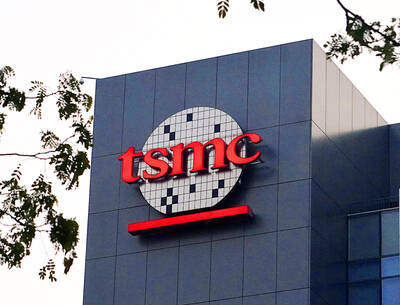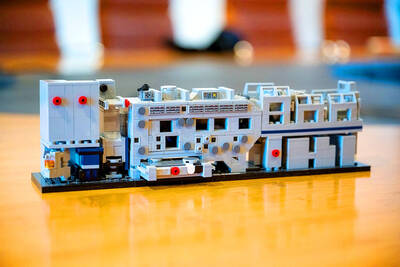Your body could soon be the backbone of a broadband personal data network linking your mobile phone or MP3 player to a cordless headset, your digital camera to a PC or printer, and all the gadgets you carry around to each other.
These personal area networks are already possible using radio-based technologies, such as Wi-Fi or Bluetooth, or just plain old cables to connect devices. But NTT, the Japanese communications company, has developed a technology called RedTacton, which it claims can send data over the surface of the skin at speeds of up to 2Mbps -- equivalent to a fast broadband data connection.
Using RedTacton-enabled devices, music from an MP3 player in your pocket would pass through your clothing and shoot over your body to headphones in your ears. Instead of fiddling around with a cable to connect your digital camera to your computer, you could transfer pictures just by touching the PC while the camera is around your neck. And since data can pass from one body to another, you could also exchange electronic business cards by shaking hands, trade music files by dancing cheek to cheek, or swap phone numbers just by kissing.
NTT is not the first company to use the human body as a conduit for data: IBM pioneered the field in 1996 with a system that could transfer small amounts of data at very low speeds, and last June, Microsoft was granted a patent for "a method and apparatus for transmitting power and data using the human body."
But RedTacton is arguably the first practical system because, unlike IBM's or Microsoft's, it doesn't need transmitters to be in direct contact with the skin -- they can be built into gadgets, carried in pockets or bags, and will work within about 20cm of your body. RedTacton doesn't introduce an electric current into the body -- instead, it makes use of the minute electric field that occurs naturally on the surface of every human body. A transmitter attached to a device, such as an MP3 player, uses this field to send data by modulating the field minutely in the same way that a radio carrier wave is modulated to carry information.
Receiving data is more complicated because the strength of the electric field involved is so low. RedTacton gets around this using a technique called electric field photonics: A laser is passed though an electro-optic crystal, which deflects light differently according to the strength of the field across it. These deflections are measured and converted back into electrical signals to retrieve the transmitted data.
An obvious question, however, is why anyone would bother networking though their body when proven radio-based personal area networking technologies, such as Bluetooth, already exist? Tom Zimmerman, the inventor of the original IBM system, says body-based networking is more secure than broadcast systems, such as Bluetooth, which have a range of about 10m.
"With Bluetooth, it is difficult to rein in the signal and restrict it to the device you are trying to connect to," says Zimmerman. "You usually want to communicate with one particular thing, but in a busy place there could be hundreds of Bluetooth devices within range."
As human beings are ineffective aerials, it is very hard to pick up stray electronic signals radiating from the body, he says. "This is good for security because even if you encrypt data it is still possible that it could be decoded, but if you can't pick it up it can't be cracked."
Zimmerman also believes that, unlike infrared or Bluetooth phones and PDAs, which enable people to "beam" electronic business cards across a room without ever formally meeting, body-based networking allows for more natural interchanges of information between humans.
"If you are very close or touching someone, you are either in a busy subway train, or you are being intimate with them, or you want to communicate," he says. "I think it is good to be close to someone when you are exchanging information."
RedTacton transceivers can be treated as standard network devices, so software running over Ethernet or other TCP/IP protocol-based networks will run unmodified.
Gordon Bell, a senior researcher at Microsoft's Bay Area Research Center in San Francisco, says that while Bluetooth or other radio technologies may be perfectly suitable to link gadgets for many personal area networking purposes, there are certain applications for which RedTacton technology would be ideal.
"I recently acquired my own in-body device -- a pacemaker -- but it takes a special radio frequency connector to interface to it. As more and more implants go into bodies, the need for a good Internet Protocol connection increases," he says.
In the near future, the most important application for body-based networking may well be for communications within, rather than on the surface of, or outside, the body.
An intriguing possibility is that the technology will be used as a sort of secondary nervous system to link large numbers of tiny implanted components placed beneath the skin to create powerful onboard -- or in-body -- computers.

Taiwan’s long-term economic competitiveness will hinge not only on national champions like Taiwan Semiconductor Manufacturing Co. (TSMC, 台積電) but also on the widespread adoption of artificial intelligence (AI) and other emerging technologies, a US-based scholar has said. At a lecture in Taipei on Tuesday, Jeffrey Ding, assistant professor of political science at the George Washington University and author of "Technology and the Rise of Great Powers," argued that historical experience shows that general-purpose technologies (GPTs) — such as electricity, computers and now AI — shape long-term economic advantages through their diffusion across the broader economy. "What really matters is not who pioneers

In a high-security Shenzhen laboratory, Chinese scientists have built what Washington has spent years trying to prevent: a prototype of a machine capable of producing the cutting-edge semiconductor chips that power artificial intelligence (AI), smartphones and weapons central to Western military dominance, Reuters has learned. Completed early this year and undergoing testing, the prototype fills nearly an entire factory floor. It was built by a team of former engineers from Dutch semiconductor giant ASML who reverse-engineered the company’s extreme ultraviolet lithography (EUV) machines, according to two people with knowledge of the project. EUV machines sit at the heart of a technological Cold

Taiwan Semiconductor Manufacturing Co (TSMC, 台積電) last week recorded an increase in the number of shareholders to the highest in almost eight months, despite its share price falling 3.38 percent from the previous week, Taiwan Stock Exchange data released on Saturday showed. As of Friday, TSMC had 1.88 million shareholders, the most since the week of April 25 and an increase of 31,870 from the previous week, the data showed. The number of shareholders jumped despite a drop of NT$50 (US$1.59), or 3.38 percent, in TSMC’s share price from a week earlier to NT$1,430, as investors took profits from their earlier gains

TAIWAN VALUE CHAIN: Foxtron is to fully own Luxgen following the transaction and it plans to launch a new electric model, the Foxtron Bria, in Taiwan next year Yulon Motor Co (裕隆汽車) yesterday said that its board of directors approved the disposal of its electric vehicle (EV) unit, Luxgen Motor Co (納智捷汽車), to Foxtron Vehicle Technologies Co (鴻華先進) for NT$787.6 million (US$24.98 million). Foxtron, a half-half joint venture between Yulon affiliate Hua-Chuang Automobile Information Technical Center Co (華創車電) and Hon Hai Precision Industry Co (鴻海精密), expects to wrap up the deal in the first quarter of next year. Foxtron would fully own Luxgen following the transaction, including five car distributing companies, outlets and all employees. The deal is subject to the approval of the Fair Trade Commission, Foxtron said. “Foxtron will be